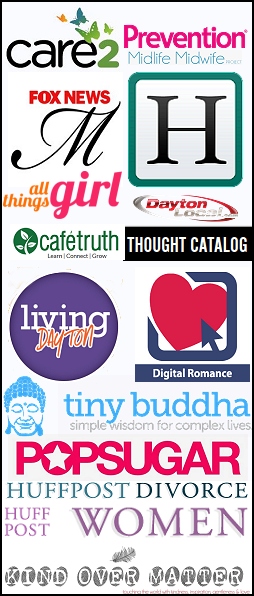September is National Suicide Prevention Awareness Month. At this time of the year, special attention is given to initiatives that raise awareness about suicide, promote mental health, and encourage individuals to seek help. These projects, which often focus on educating the public and showing support to those who are struggling, reflect the community’s collective desire to reduce the stigma surrounding suicide and mental health issues. Given the important purpose of this month-long campaign, it’s not unusual to see events as well as accessories like T-shirts and rubber bracelets that spark conversations about suicide prevention awareness leading to and after September.
How Did Suicide Prevention Awareness Month Come to Be?
The origins of Suicide Prevention Awareness Month can be traced back to the mid-to-late 20th century, during which the growing suicide rates became a concern for many communities. In 2003, the International Association for Suicide Prevention (IASP), in collaboration with the World Health Organization (WHO), established September 10th as World Suicide Prevention Day.
This global event aims to highlight the importance of suicide prevention and encourage worldwide action. Over time, the entire month of September became recognized as Suicide Prevention Awareness Month in many countries, including the United States, to allow for more comprehensive awareness campaigns and outreach efforts.
Bringing Attention to Suicide Prevention: What Can You Do to Spread the Word?
Spreading awareness about suicide prevention is no easy feat. It’s a complex task in need of a multifaceted approach that includes education, support, and advocacy. Here are some effective strategies to highlight the importance of suicide prevention and encourage people to reach out:
-
- Raising Awareness – The simple act of educating the public about the signs of suicidal behavior and the importance of mental health can save lives. Awareness campaigns, social media outreach, and community events can contribute to spreading the message that suicide is preventable and that help is available.
- Encouraging Open Dialogue – Reducing the stigma surrounding mental health and suicide is key to suicide prevention. Encouraging people to talk openly about their feelings and experiences can help create a supportive environment where individuals feel comfortable seeking help. Organizing events to share people’s experience about this topic can be a great way to open an honest and sincere discussion.
- Providing Resources – It’s a must for those who need it to have access to mental health resources such as hotlines, counseling services, and support groups. Sharing information about available resources can make it easier for people to find professional assistance and practical support.
- Supporting Mental Health Initiatives in Schools and Workplaces – Schools and workplaces are critical settings for promoting mental health and preventing suicide. Implementing programs that focus on mental health education, stress management, and resilience can make a significant difference in these environments.
- Advocating for Policy Change – Advocating for policies that increase access to mental health care, provide funding for suicide prevention programs, and protect individuals at risk can create systemic change that supports suicide prevention efforts.
- Engaging in Community Involvement – Community events such as walks, workshops, or fundraisers, can help build a sense of community and support around the issue of suicide prevention. Showing support to the cause can include hosting these events or joining them.
- Promoting Self-Care and Wellness – It’s also practical to encourage individuals to prioritize their mental health through self-care practices, such as mindfulness, exercise, and connecting with others, can help reduce the risk of suicide.
Examples of Key Initiatives Launched during Suicide Prevention Awareness Month
Some of the most notable projects and initiatives that were launched to widen the reach of suicide prevention efforts are:
-
- National Suicide Prevention Lifeline – This toll-free hotline (1-800-273-TALK), which is open 24/7, provides immediate assistance to individuals in crisis. Launched in 2005, the Lifeline is a critical resource that connects callers with trained counselors who offer support and resources.
- #BeThe1To Campaign – This campaign, created by the National Suicide Prevention Lifeline, encourages people to be the one to help someone in crisis. Participants and volunteers can contribute by following five steps: ask, be there, keep them safe, help them connect, and follow up. The campaign emphasizes the role that everyone can play in preventing suicide.
- Project Semicolon – Founded in 2013, Project Semicolon or Project; is a grassroots movement dedicated to presenting hope and love to those who are struggling with mental health issues, self-harm, and suicidal thoughts. The semicolon symbol has become a powerful representation of solidarity and support for those battling mental illness.
- Out of the Darkness Walks – Organized by the American Foundation for Suicide Prevention (AFSP), these walks take place across the country to raise funds and awareness for suicide prevention. In this event, participants walk together in memory of loved ones lost to suicide and to support ongoing prevention efforts.
- 988 Suicide & Crisis Lifeline – Launched in 2022, the 988 hotline provides an easy-to-remember number for accessing mental health crisis support. It’s intended to serve as a direct connection to compassionate care and accessible support for anyone experiencing a mental health-related distress.
Suicide Prevention Awareness Month serves as a vital reminder of the importance of mental health and the role people all play in preventing suicide. By understanding the history of this cause and the initiatives launched to support it, individuals and communities can better appreciate the need for ongoing awareness and action. Through the above-mentioned efforts, every person can help create a world where everyone has access to the support they need and where no one feels alone in their struggle.









